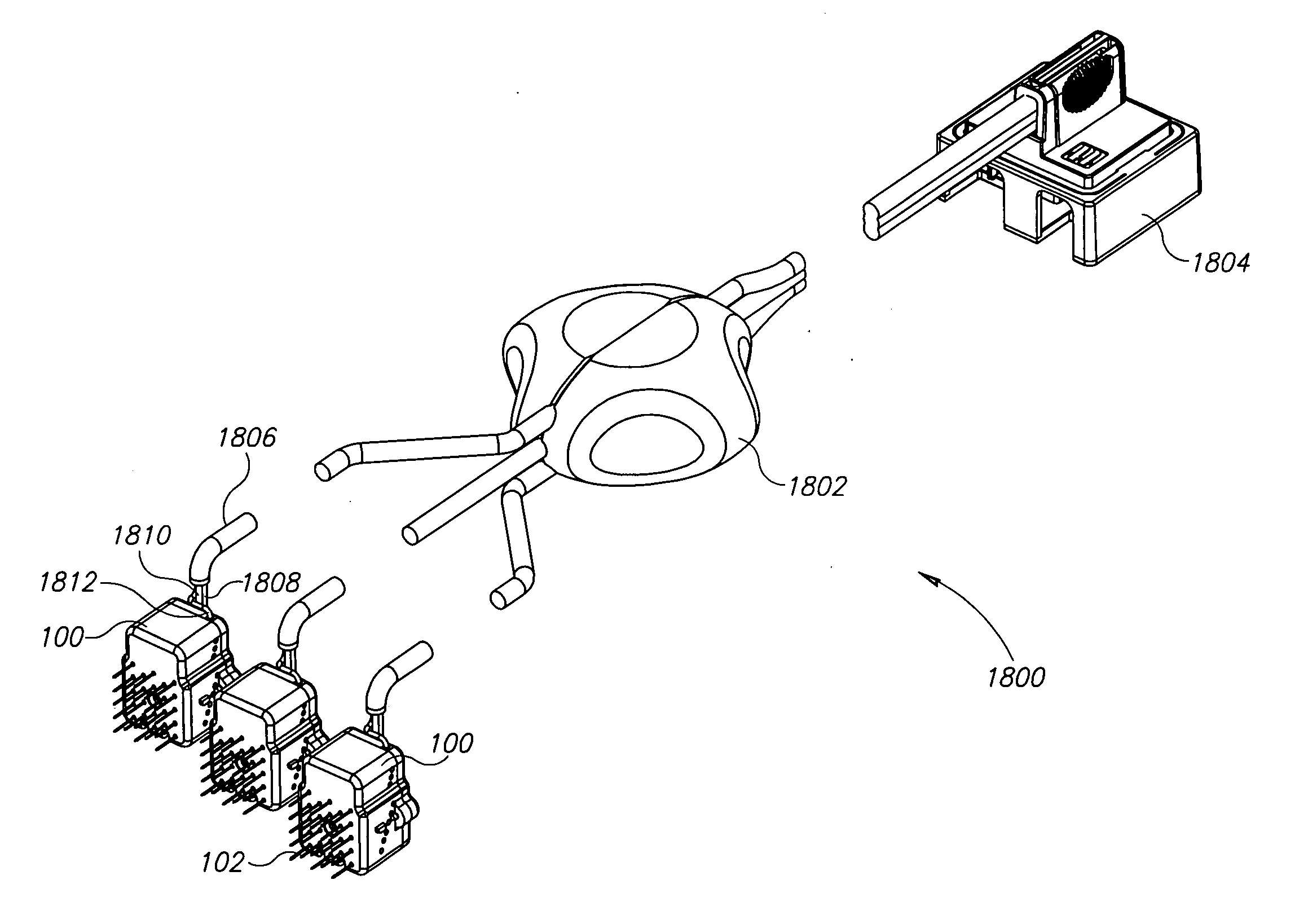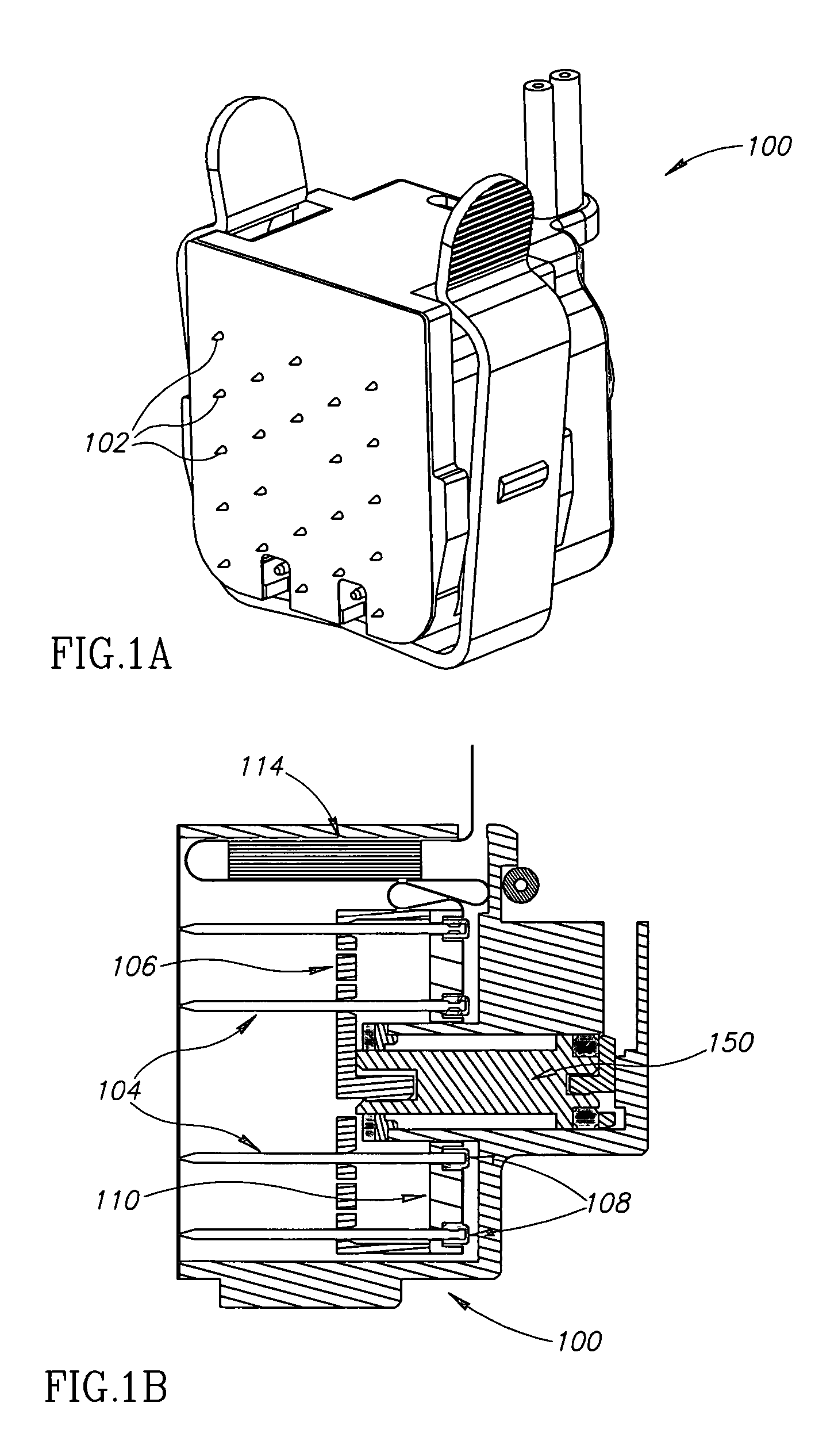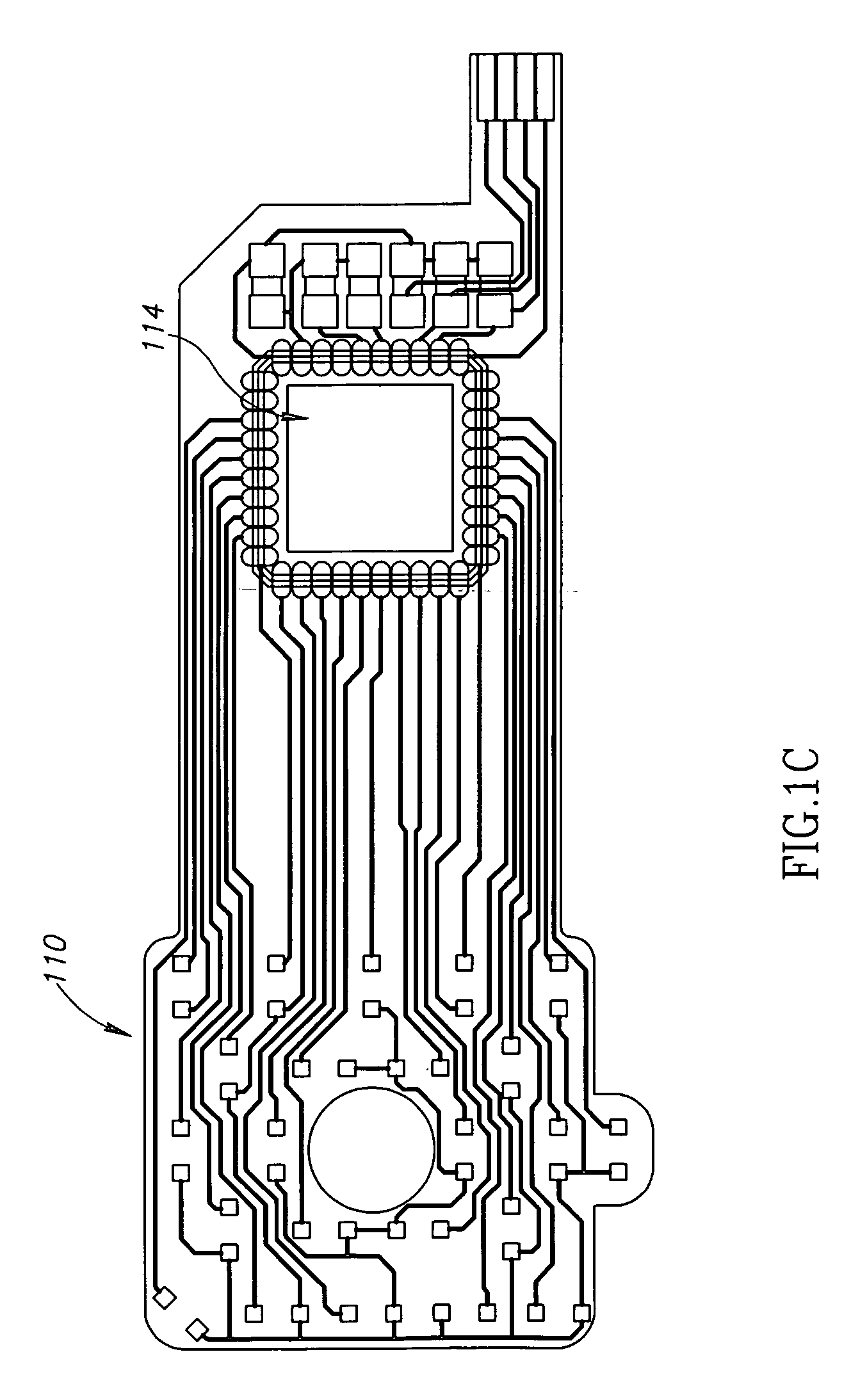Measurement element position determination
a technology of measurement elements and positions, applied in the direction of diagnostic recording/measuring, application, impression caps, etc., can solve problems such as registration and/or other accuracy problems
- Summary
- Abstract
- Description
- Claims
- Application Information
AI Technical Summary
Benefits of technology
Problems solved by technology
Method used
Image
Examples
Embodiment Construction
General Description of an Exemplary Embodiment
[0046] Referring to FIG. 18, a schematic showing an overall system 1800 for determining measurement element positions is shown. Measurement elements 102 are depicted protruding out of a cartridge assembly 100 generally in the direction of an object whose surface geometry is to be measured. Measurement elements 102 and cartridge assembly 100 are described in greater detail below. A control module 1804 is provided in operative communication with at least one cartridge assembly 100. In some exemplary embodiments of the invention, communication comprises data generated by at least one cartridge assembly 100. Optionally, communication comprises data generated by control module 1804. Optionally, communication is achieved via electronics. In some exemplary embodiments of the invention, communication is comprised of movement impetus generated at control module 1804. Optionally, communication is achieved via hydraulics. Optionally, communication...
PUM
 Login to View More
Login to View More Abstract
Description
Claims
Application Information
 Login to View More
Login to View More - R&D
- Intellectual Property
- Life Sciences
- Materials
- Tech Scout
- Unparalleled Data Quality
- Higher Quality Content
- 60% Fewer Hallucinations
Browse by: Latest US Patents, China's latest patents, Technical Efficacy Thesaurus, Application Domain, Technology Topic, Popular Technical Reports.
© 2025 PatSnap. All rights reserved.Legal|Privacy policy|Modern Slavery Act Transparency Statement|Sitemap|About US| Contact US: help@patsnap.com



